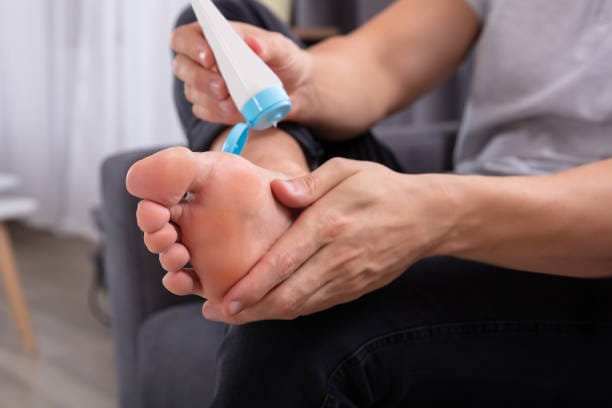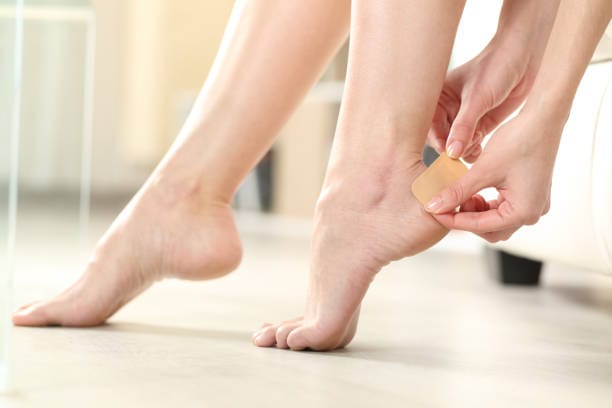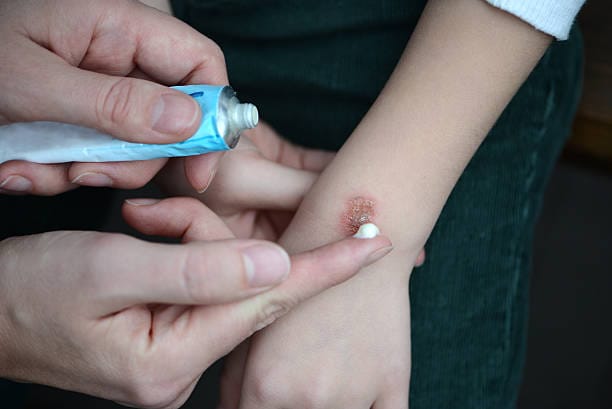Cryotherapy vs Laser Verruca Removal: Which Is Better?

Plantar warts, known as verrucas, can be stubborn and uncomfortable monsters. However, if over-the-counter treatments don’t work well for yourself or your child, professional removal methods such as cryotherapy and laser verruca removal are the most effective. But which one is better?
Verruca freezes by liquid nitrogen, which causes it to fall off. On the other hand, laser verruca removal works by directing concentrated light energy to the wart and killing it at the root. The two treatments are regularly used but differ in results, pain, recovery rate, and cost.
This article compares laser verruca removal and cryotherapy to help you determine the right method for overcoming your condition. These treatments will help you understand faster solutions, less painful experiences, or long-lasting results, whichever you seek.
As we have already established the available methods, it is time to discuss the pros and cons to determine the best verruca removal method for you!
What Is Cryotherapy for Verruca Removal?
Cryotherapy, which involves freezing a verruca with liquid nitrogen, can remove it. The extremely cold temperature destroys infected skin cells, killing the wart and causing it to fall off. Cryotherapy is a quick and uncomplicated solution carried out in clinics.
How Cryotherapy Works
- Liquid nitrogen is sprayed or applied on the verruca by a dermatologist or specialist.
- The freezing process takes a few seconds and maybe stinging or burning.
- The treated area usually turns white within a few days and forms a blister.
- After 1 to 2 weeks, the verruca gets dry up and falls off.
- Some verrucas must be treated more than once, about 2–3 weeks apart, to ensure their complete removal.
Benefits of Cryotherapy
Usually, it's a matter of a few minutes.
- The stitches are never cut open, so it is non-invasive.
- The area requires little aftercare – it must be left clean and dry.
- Safe for most people – suitable for adults and children.
Potential Downsides
However, sensitive skin can find it painful during and after treatment.
If a verruca is deep-rooted, it can take several sessions.
- It can cause redness, blistering, mild scarring and temporary skin discolouration.
- However, it may be ineffective if the verruca is large or stubborn.
The advantage of cryotherapy is convenience, but how does it compare to laser verruca removal? Let’s find out.
What Is Laser Verruca Removal?
Laser verruca removal is an advanced treatment that uses focused light to eradicate the verruca tissue precisely at its origin. While cryotherapy freezes the wart, laser treatment selectively chooses the blood vessels that feed the verruca, eliminating its oxygen and, thus, its nutrients. This causes the wart to shrink and go away naturally over time.
How Laser Verruca Removal Works
- The verruca is targeted via a pulsed dye laser (PDL) or CO₂ laser via a dermatologist.
- The laser heats and then collapses the blood vessels within the wart itself.
- A few weeks later, the verruca's lack of blood supply means it will eventually die and fall off.
- The verrucas may be treated in under 15 or 30 minutes, depending on their size and number.
- For the most part, complete removal is achieved through one or two sessions.
Benefits of Laser Verruca Removal
- Highly effective – especially for stubborn, deep-rooted verrucas.
- Precise – only the wart is affected, and the surrounding skin is not damaged.
- Cryotherapy is less painful than surgery but more painful than low-temperature cold treatments, although they cause minimal discomfort.
- It takes fewer sessions – most verrucas will have gone after one or two treatments.
Potential Downsides
- Slight discomfort during treatment (usually mild stinging or heat).
- Redness, swelling, or scabbing of the treated area in a minor way.
- Higher cost compared to cryotherapy.
- It is not suitable for very large verrucas.
Modern laser verruca removal offers a very good solution to the problem. However, which one is the most effective? Does it cause more pain, and does it recover faster? Let’s explore.
Effectiveness: Which Works Better?
Cryotherapy and laser verruca removal are comparable when it comes to effectiveness. The two treatments work on different success rates and varying rates of result.
Effectiveness of Cryotherapy
Verruca is widely removed by cryotherapy. However, its effectivity depends on the wart's size, depth and location.
Statistically, the success rate is about 50–70%. Deeper verrucas will need more than one session.
Cryotherapy can take 4–6 weeks for verrucas to disappear and sometimes longer.
The verruca is normally eliminated in 3–6 sessions (2–3 weeks apart) as many patients need.
Because cryotherapy may not destroy the verruca, it may recur if the freezing does not penetrate deep enough.
Thicker skin on the soles of the feet (plantar warts) may not be as successful as wart removal.
Effectiveness of Laser Verruca Removal
Laser treatment is one of the most effective ways of treating stubborn verrucas that fail to respond to other treatments.
Laser verruca removal is effective 8–9 out of 10, and the success rate is higher than cryotherapy.
The laser aims and directs at the wart's blood supply, stopping the flow of nutrients and preventing regrowth.
Verrucas usually shrink and disappear within 2 to 4 weeks, or 1 to 2 sessions are needed.
Lower recurrence rate, as the laser destroys the verruca from the root.
Laser Verruca Removal Which Is More Effective?
Small verrucas can be treated with cryotherapy, but it may take longer and require repeated treatment.
It will remove your verruca faster, work better for harder-to-treat verrucas, and lower your risk of it returning.
Now, we will discuss whether one treatment is more tolerable than the other regarding the pain experienced.
Pain and Discomfort: Which Is More Tolerable?
Pain and discomfort are among the deciding factors when choosing between cryotherapy and Laser verruca removal. Both treatments are effective, but they can cause quite different levels of discomfort during and after each.
Pain During Cryotherapy
The freezing process in cryotherapy can also be unpleasant. Liquid nitrogen freezes the verruca, and it causes a sharp, stinging sensation. Some have described it as a mild burning sensation and an intense cold. The procedure usually causes a few seconds of pain, and some may feel mild pain afterwards, even after the area is blistered and swollen.
The area is likely to feel sore and tender for a few days after treatment, and blistering is possible, particularly if the verruca is on the feet, making walking uncomfortable.
Pain During Laser Verruca Removal
Cryotherapy is generally considered to be less painful than laser treatment, though it still causes some pain.
The laser can target the verruca, and patients may feel heat or mild stinging. Often, the sensation feels like a rubber band snapping against the skin.
Additionally, some discomfort is normal, but most people find it tolerable, and their pain mostly disappears soon after the treatment.
Laser removal tends to cause minimal redness or swelling compared to cryotherapy; however, mild redness and swelling may occur in the days following.
Which Is More Tolerable?
As the freezing process and the pain afterwards can be more uncomfortable, cryotherapy is more painful. However, although laser treatment is quicker and less painful, after treatment, formal corneal trauma does occur.
Recovery Time and Aftercare: Which Is Quicker?
Cryotherapy and Laser verruca removal have similar recovery times and aftercare. Although the recovery from each treatment isn’t the same, both involve some downtime.
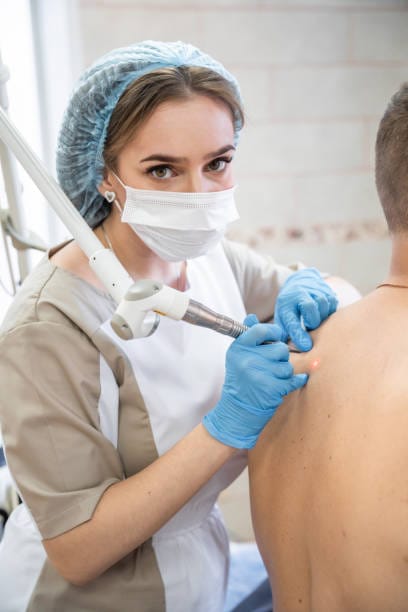
Recovery Time and Aftercare for Cryotherapy
Most patients can resume daily activities very soon after cryotherapy. However, healing will take time. A few days after treatment, the verruca will blister, and the treated skin will tend to be tender for 3 –7 days.
The verruca generally falls off within 1–2 weeks. This might be painful because of blistering and soreness, but it will be sore in areas where you have to walk, so it is better to rest.
Aftercare:
- Reducing the risk of infection is keeping the area clean and dry.
- A protective dressing may be applied if a blister forms, but it shouldn’t be too tight.
- Avoid scratching or picking the treated area, as it may result in scars or infection.
- Because the verruca may not fall off with one session, you may require additional treatments with longer recovery times between sessions.
Recovery Time and Aftercare for Laser Verruca Removal
Recovery Time:
Traditionally, laser treatment generally has a much faster recovery time. Although many people follow up with X-rays, most return to their normal routine immediately after the procedure. This may take hours to a day, but the treated area does not last long and reverts to red and swollen. Full healing takes about 1–2 weeks.
Aftercare:
To avoid irritation, the area should be kept clean and protected from the sun. Wear and tear can cause scrapping or rubbing, which should be avoided, but no dressings are necessary.
Which Is Quicker?
Cryotherapy takes longer, while laser treatment is quicker and has less discomfort, larger or deeper verrucas tend to take longer to heal.
However, when considering cryotherapy vs. laser verruca removal, it’s always important to consider the side effects and risks associated with both procedures. Treatments are generally safe but have specific possible complications. Knowing these can help you make the right decision.
Cryotherapy May Have Both Side Effects And Risks
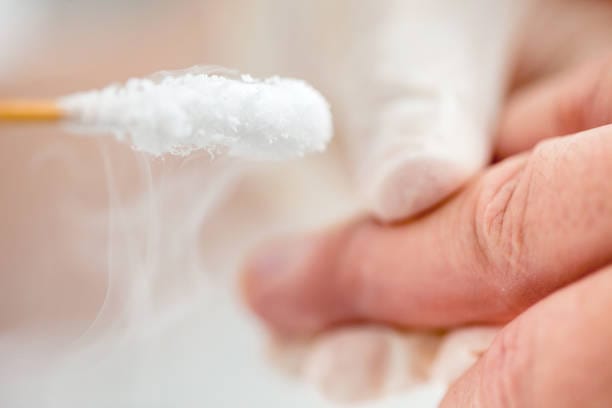
Common Side Effects:
Side effects include blistering, the most common one, usually within a few days of treatment. Sometimes, the treated area around the loci of damage will become red or swollen, but this will usually go away within a few hours to a few days.
Mild pain or tenderness may be felt by some patients for up to a week after treatment.
Potential Risks:
- The process should not be too aggressive, or scarring may occur in the area given adequate care.
- Proper skin care is rarely necessary during healing, but nerve damage or infection can occur.
- The skin area where the treatment is given may turn lighter or darker, especially in people with darker skin, and pigment changes can occur.
- The chances of side effects and risks of laser removal of verruca are rare, but they exist.
Laser Verruca Removal Common Side Effects:
Redness and mild swelling around the treated area are common and usually disappear within a few hours to a day. When treated, the skin heals, and it may crust or scab. There may be mild discomfort or heat for some patients during the procedure.
Potential Risks:
The skin can scar if the wound is not properly cared for or the treatment is too aggressive. If the treated area is not kept clean, there’s a minimal risk of infection. Like cryotherapy, pigment changes are possible, particularly in those with darker skin tones.
Laser Verruca Removal Which Is Safer?
If cryotherapy is not handled carefully, it is more likely to blister and scar. On the other hand, risks of complications with laser treatment tend to be slightly lower but still may lead to scarring and skin pigmentation changes.
Why Choose Revitalise London for Laser Verruca Removal?
At Revitalise London, we understand how frustrating verrucas can be, not only because of their discomfort but also because of their appearance. We are committed to offering the most advanced, safest, and most effective treatment possible for your verruca, providing a high-quality service in every aspect. Whether you go with cryotherapy or laser verruca removal, our experienced professionals specialise in providing the ultimate treatment for each case.
Expert Team and Advanced Technology
As such, the Revitalise London team of seasoned skin care and treatment specialists is proud to serve our patients. Our technicians are exceptionally trained in the most recent methods of eliminating verrucas. We use up-to-date technology to ensure the procedure is as safe and comfortable as possible. Our years of experience treating all types of skin conditions qualify us to provide the best care standard to our clients. Regardless of which verruca removal option you select, we aim to over-deliver the best results.
We are committed to using cutting-edge technology to offer more precise treatments. For instance, in our treatment of verrucas, we use CO2 laser technology, which attacks the verruca without damaging the surrounding tissue. This healing process requires less time and is more efficient, as there is a lower risk of side effects and less discomfort. Likewise, the cryotherapy sessions we offer utilise controlled freezing technology, enabling the verruca to be treated efficiently without causing any unwanted pain or damage to the skin.
Personalised Treatment Plans For Laser Verruca Removal
That's why we put just as much effort into our approach to verruca removal as a person does for the rest of life. Our experts will discuss your symptoms, concerns, and the severity of the verruca at the time of your initial consultation, during which we will also carefully assess your condition. Based on your verruca assessment, we will make the best recommendation for treatment (cryotherapy, laser verruca removal, or both).
They will also inform our professionals of all your questions about the benefits and risks of treatment and aid you in making an informed decision. We want to customise your treatment plan to ensure the verruca is removed while trying to minimise the risks or side effects from the verruca treatment.
Comfort and Care at Every Phase of the Treatment Process
At Revitalise London, your comfort is our priority when undergoing treatments. Although cryotherapy and laser verruca removal may be the quickest and least painful methods, we go further to make sure you feel relaxed during the whole process. Our friendly team is available from your first consultation through treatment and postoperative care, and they can answer any other concerns you may have.
Before the procedure was carried out using a laser to remove verrucae, we numbed the area to minimise discomfort. The treatment is quick, and most patients experience only the mildest sensations of heat during the treatment. We apply the cooling gel to avoid pain and apply cooling while freezing the tissue gradually, thus decreasing the pain and risks of injuries.
Aftercare and Long-Term Results
Once our treatment at Revitalise London is complete, our care does not end. Aftercare is provided, and clear and thorough instructions will help you recover quickly and efficiently. Our team will always assist you in caring for your skin correctly to prevent infection and the healing process, whether you have had cryotherapy or laser treatment. We are especially aware of the need and significance of aftercare. We always encourage clients to return for follow-up to ensure they are healing correctly and the verruca has been fully treated.
In addition, Revitalise London is pleased to provide long-term solutions. Our therapies at Verruca Clinic are all Verruca removals to leave you with healthy skin in the long run. We provide skincare advice, advise you of any maintenance treatments, and explain how to avoid future outbreaks.
A Trusted Clinic for Your Skin Health
When you go to Revitalise London, you choose a clinic that cares about your health and well-being. Over the years, our reputation for providing a high standard of professional and compassionate care has earned us the trust of countless clients in London. If you’re suffering from verrucas, come to Revitalise London, where we specialise in giving the best results in the most favourable and soothing environment.

